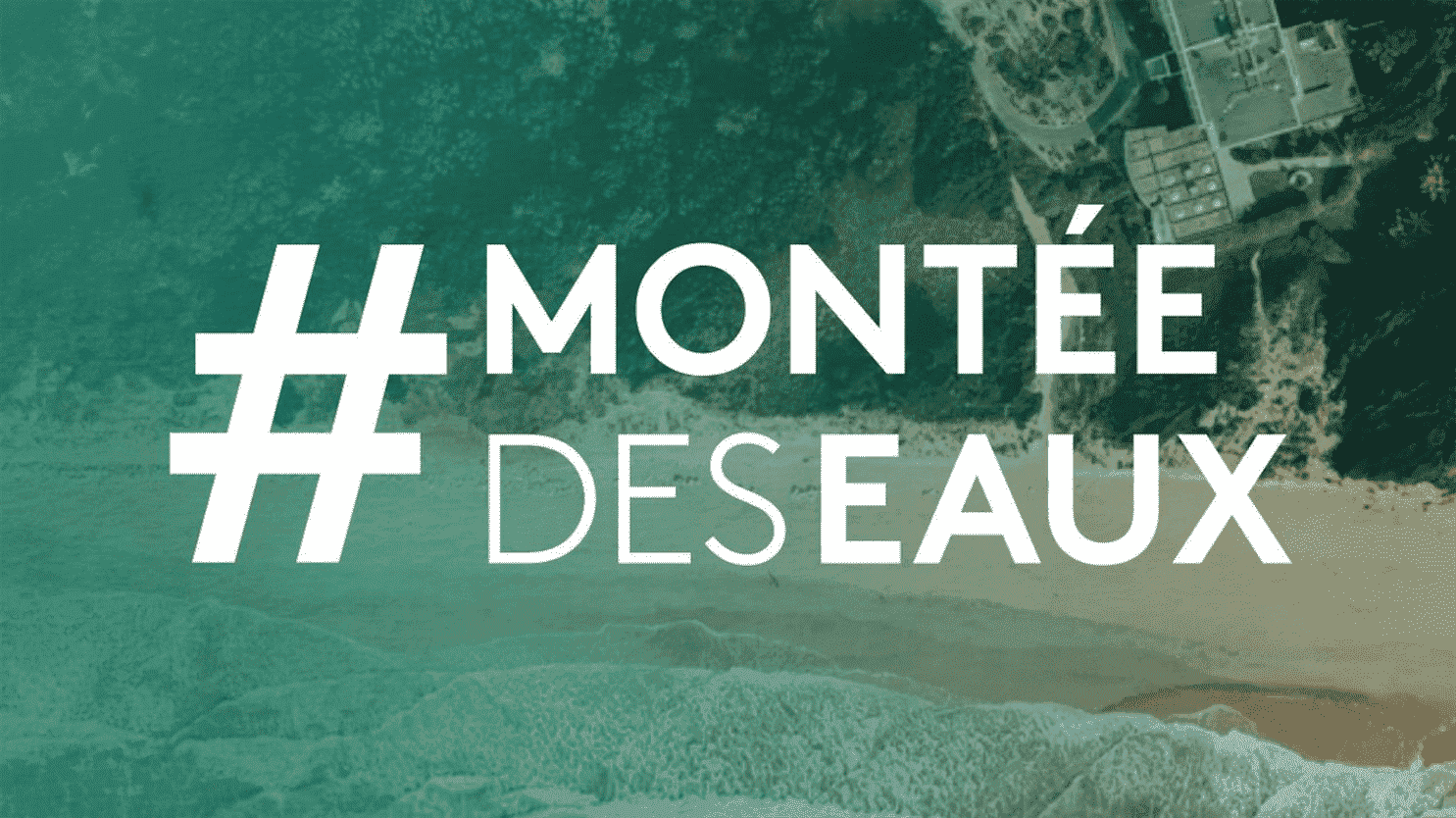In 2100, France will no longer have the same face. Under the combined effects of coastal erosion and rising sea levels linked to global warming, the coastline of our country, which concentrates 10% of the population for 4% of its surface area, will be profoundly modified. The beach where you used to be will recede, the campsite or the house of your vacation will perhaps be under water, this landscape of cliffs that you loved so much will undoubtedly disappear.
>> This article is part of the special operation # MontéeDesEaux launched by franceinfo on the occasion of the COP26
On the occasion of the COP26 in Glasgow where the international community met to accelerate efforts against climate change, franceinfo is launching the # MontéeDesEaux operation to better understand this phenomenon.
Why is the sea rising?
Our coasts are undergoing a double assault. First, erosion, a natural phenomenon linked to the depletion of the stock of sediment inherited from the last ice age, gradually nibbles the shore, more or less quickly depending on its nature: sandy beaches and chalk cliffs strongly recede while erosion is much slower on the granite. This phenomenon is locally aggravated by human activity: sand or pebble extraction, dams which block sediments in rivers, dykes or port jetties which disrupt their natural circulation.
Then, global warming. By ejecting tons of greenhouse gases into the atmosphere, humans increase the global temperature of the planet and those of the oceans. As it heats up, the water expands and takes up more space. It also melts the two polar caps, Greenland and Antarctica. In its latest report, submitted in August 2021, the Expert Group intergovernmental on evolution of the climate (IPCC) gives a fairly wide forecast interval, going from 0.28 to 1.01 m in 2100. But the current rate of our emissions takes us clearly towards the top of this range and towards the symbolic bar of 1 m .
Why devote a special operation to the # MontéeDesEaux now?
2100 is tomorrow. A child born in 2021 will experience these upheavals. And there is no need to wait until this date to observe the first damage. Erosion is already at work: in Soulac-sur-Mer (Gironde), the Le Signal building was evacuated in 2014; in Gouville-sur-Mer (Manche), two campsites risk being submerged in each storm; in Biscarosse (Landes), houses are threatened by 2025; in Martinique, in Prêcheur, a school will soon be moved. As the painful episode of Xynthia recalled in 2010, winter storms regularly accelerate the process.
Above all, planning and adaptation decisions for the coming decades are being taken now. In February 2020, the government announced a series of measures to deal with flooding and coastal erosion. Relocating a subdivision, building a dike or rethinking the organization of a municipality are long and expensive processes, which need to be anticipated. “If we let nature do its thing, it will impose its timing on us. And managing in a hurry is bad advice and expensive”, recalls Stéphane Costa, geographer at the University of Caen and president of the National Coastline Strategy.
Finally, now is the time to act to curb global warming. As the UN recalled in September, the world today is on a “catastrophic path”. If we are to avoid the worst-case scenario and an overall rise of 1.01m, our greenhouse gas emissions must be reduced now. The # MontéeDesEaux is therefore extremely topical. A recent INSEE study carried out in Normandy estimates that 122,000 people live in areas threatened by marine submersion in the long term.
What does this special operation consist of?
This week we are publishing a large format, five reports on the coast and in a virtual reality room, two maps to understand and an article focused on solutions to this phenomenon. The reports in metropolitan France and the articles were written by our journalists Thomas Baïetto, Brice Le Borgne and Pierre-Louis Caron and illustrated by the photographer Pierre Morel. The report in Martinique was provided by Sophie Lonete from Martinique La 1ère.
>> LARGE FORMAT. In France, the climate crisis is here: immersion in these cities threatened by the # MontéeDesEaux

>> MAP. # MontéeDesEaux: is your city or your beach threatened?

>> INFOGRAPHICS. # MontéeDesEaux: find out if your city or your beach is being eaten away by coastal erosion

>> Fight against global warming: how to calculate and reduce your carbon footprint?

>> REPORT. In Martinique, the village of Prêcheur will move to escape the # MontéeDesEaux

>> REPORT. Faced with the # MontéeDesEaux, the confusion of Gouville-sur-Mer: “we didn’t think it would happen so quickly”

>> REPORT. In Biscarrosse, the difficult relocation facing the # MontéeDesEaux: “It is not the mayor who must make us leave, it is the sea”

>> BEFORE / AFTER. Ault, Lancieux, Biscarrosse, Vias … Watch how the coast has evolved in fifty years with erosion and the # MontéeDesEaux

>> REPORT. In this northern village located below sea level, we are already preparing for the # MontéeDesEaux: “We will have to pump and pump again”

>> VIDEO. # MontéeDesEaux: researchers have developed a virtual reality simulation to “make things concrete” and alert coastal towns

>> REPORT. # MontéeDesEaux: in Dolus-d’Oléron, “we don’t see the urgency to leave”

>> GREAT INTERVIEW. Why doesn’t the # MontéeDesEaux discourage living by the sea?

>> Global warming: are there any solutions for coastal municipalities facing #Rising of Water and erosion?

